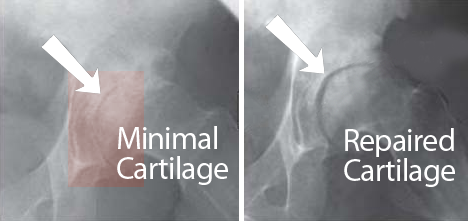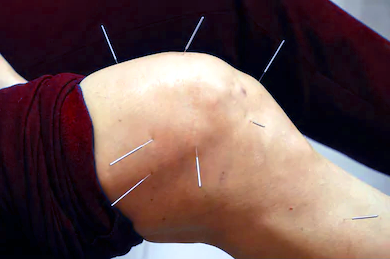Patients ask about alternatives to pain medication
Dr. Ragsdale is now offering Prolo-Acupuncture, a treatment that stimulates tissue repair to reduce pain and treat conditions in many parts of the body. Prolo is short for proliferation and it is needling to stimulate the proliferation of normal tissue.
What is Prolotherapy?

According to the National Institute of Health, Prolotherapy treatment involves “a series of 2– 5 monthly injections of a topical anesthetic and a solution of other medicines directly on sore tendon or ligaments, or into painful joints” (Rabago, Slattengren, & Zgierska, 2010,p. 17).
Is Prolotherapy safe?
Yes. Published studies for the National Institute of Health (NIH) indicate that prolotherapy is safe and prudent when delivered by an experienced practitioner. Findings reveal that the treatment does not appear to have significant risk beyond other injection techniques, such as steroid injections.
How does Prolo-acupuncture work?
Dr. Ragsdale offers prolo-acupuncture treatment, which can provide similar results without injections. By directly treating these injured areas, we are stimulating the body to heal itself, restoring function to the joint or tendon naturally. This treatment promotes rapid healing and the reduction of pain.
The effectiveness is wide-ranging and includes pain associated with:
- The back
- Neck
- Joints throughout the body
- Arthritis
- Migraine headaches
- Fibromyalgia
- Sciatica
- Herniated discs
- Temporo Mandibular Joint Dysfunction (TMJ).
Chronic musculoskeletal pain is often due to the weakness of ligaments and tendons. Joints, such as the knee and shoulder, often develop instability as well as weakening of the internal cartilage surfaces. These areas are often improved by prolotherapy and prolo-acupuncture.
How are pain and injury assessed?
I will perform a physical exam for common injuries and pain of the major joints of the body, including observation, inspection, palpation, and special orthopedic tests for joint range-of-motion, tracking, and stability. During the exam, we will assess levels of pain as well as the mechanics of injury, looking for red flags for serious or urgent joint conditions that could involve other medical professionals. If treatment is applicable to your condition, a prolo-acupuncture schedule will be created for you.

How is Prolo-acupuncture performed?
Prolo-acupuncture involves needling into the area where the ligaments have either been weakened or damaged through injury or strain. It is performed as similar to normal acupuncture.
When is this type of treatment advised?
- Recurrent swelling or fullness involving a joint or muscular region
- Popping, clicking, grinding, or catching sensations with movement
- A sensation of your legs giving way with associated back pain
- Temporary benefit from chiropractic manipulation or manual mobilization that fails to ultimately resolve the pain
- Distinct tender points along the bone at tendon or ligament attachments
- Numbness, tingling, aching, or burning referred into an upper or lower extremity
- Recurrent headache, face pain, jaw pain, ear pain
- Chest pain with tenderness along the rib attachments on the spine or along the front of the chest
- Spine pain that does not respond to surgery or whose origin is not clear from MRI, CT, X-Ray, Myelogram, or other similar studies
Prolo-acupuncture can:
- Accelerate healing and reduce severity from acute sprains and strains
- Re-stabilize hypermobile joints, restoring normal joint tracking and biomechanics
- Limit and reverse the effects of joint degeneration that leads to osteoarthrosis
- Enhance the treatment of muscles, nerves, as well as other soft tissues, and systems that contribute to chronic pain.
After a musculoskeletal injury, there is often strain or a stretch of ligaments. Usually, healing occurs over time, restoring ligaments to their normal strength. However, if this healing does not occur, the result is lax ligaments. This can cause instability, muscle spasm, and a tendency to incur re-injury.
Pain that fails to respond to the traditional approaches is often caused by an injury to fibrous connective tissues, such as tendons and ligaments. Ligaments connect bone to bone, while tendons connect muscle to bone. Both ligaments and tendons may be damaged by major or minor trauma—smaller activities are repetitive. In most people, these injuries tend to heal over 1 to 2 months.
Sometimes the tissue damage is beyond repair. These tissues have a lower blood supply and are known to heal poorly compared to other tissues such as muscle, and therefore surgery may be needed. In other cases, patients with conditions such as fibromyalgia and chronic fatigue syndrome may have underlying metabolic deficiencies that impair the healing process. These patients will often demonstrate pain and tenderness at the connections of their ligaments and tendons. This discomfort presents with patterns of pain, such as numbness, tingling, and other abnormal sensations.
Ligaments and Joints that can benefit from Prolotherapy and Prolo-acupuncture:
Shoulder, Arms, and Hands
- Acromio-clavicular joint
- Gleno-humeral joint: AMBRI, TUBS and SLAP lesions
- Elbow collateral ligaments
- Wrist ulnar- and radio-carpal ligaments and the triangular fibrocartilage complex
Hip, Knee, Ankle, and Foot
- Knee patellar, collateral, and cruciate ligaments
- Knee menisci and the tibio-meniscal ligament
- The superior and inferior tibio-fibular joints
- Lateral ankle/foot: ATF, CF, PTF and CC ligaments
- Medial ankle: hyper-pronation, deltoid and spring ligaments
The Spine
- Cervical and lumbar facet joints
- Posterior sacro-iliac, ilio-lumbar and sacro-tuberous ligaments
- Whiplash and the supraspinous ligament
Schedule your Prolo-acupuncture consultation by clicking here
Rabago, D., Slattengren, A., & Zgierska, A. (2010). Prolotherapy in primary care practice. Primary care, 37(1), 65–80. https://doi.org/10.1016/j.pop.2009.09.013
